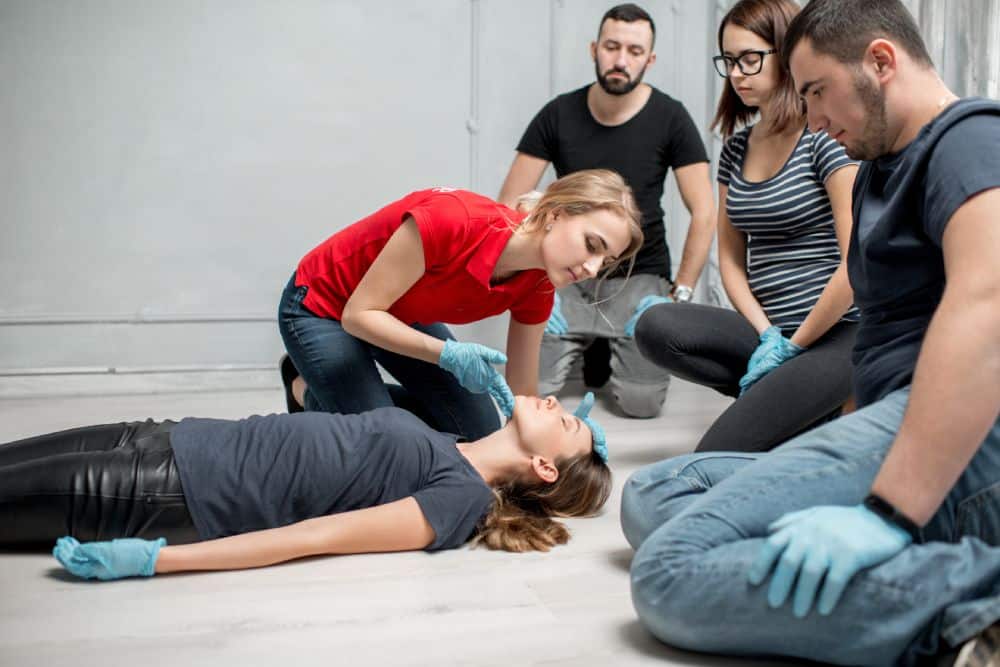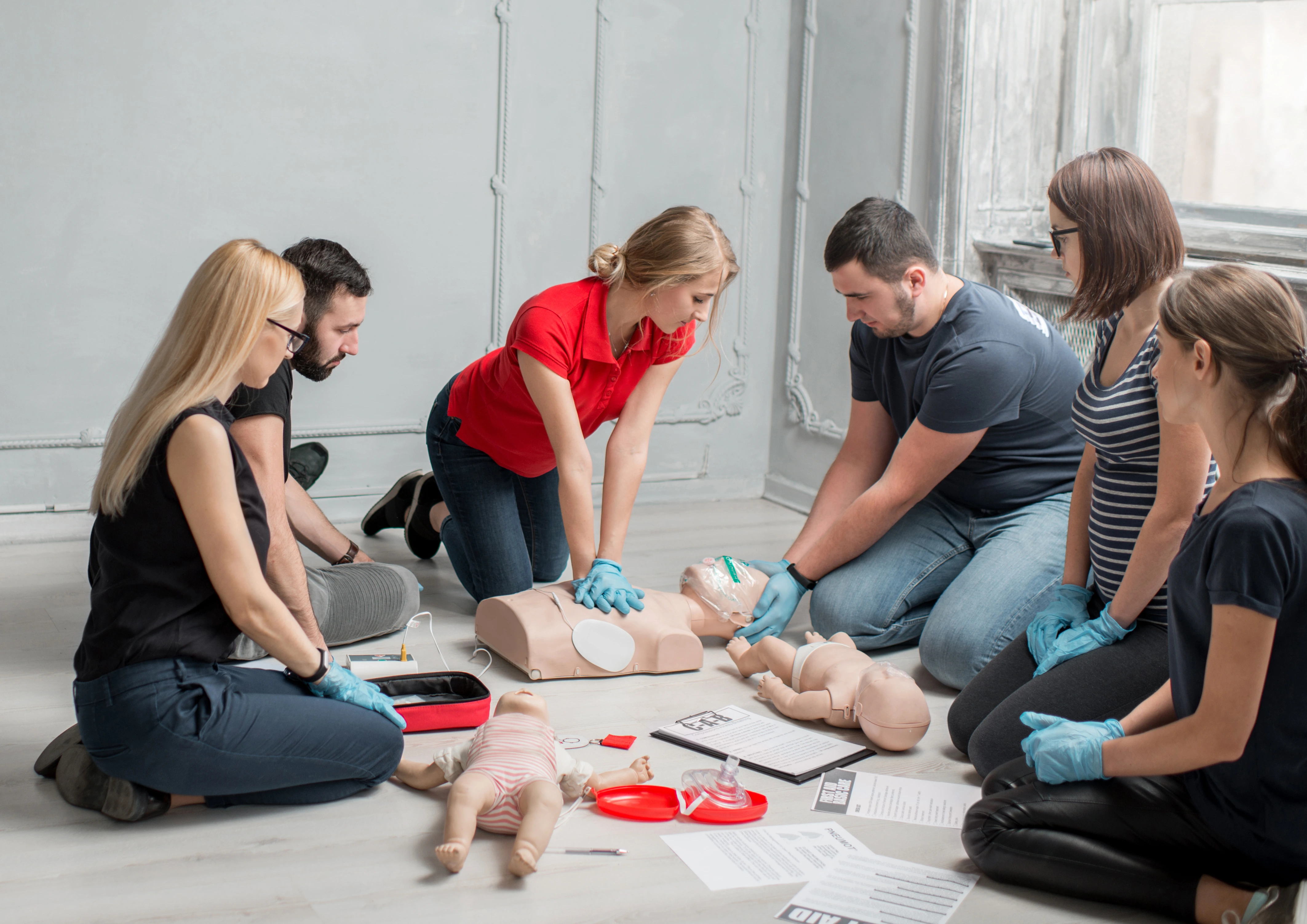Introduction
In an uncertain globe, recognizing just how to conserve a life can be one of the most effective skill one can have. Cardiopulmonary resuscitation, frequently called mouth-to-mouth resuscitation, is a crucial tool in emergency circumstances where somebody's heart beat has actually stopped. It's crucial for not just health care professionals however likewise for man in the streets who desire to make a distinction. This comprehensive post delves into the subtleties of CPR, including its importance, strategies, and the extensive training given in CPR courses.
Understanding mouth-to-mouth resuscitation: The Lifesaving Skills Shown in Mouth-to-mouth Resuscitation Courses
CPR is more than simply a series of compressions and breaths; it is a lifesaving technique that combines knowledge with useful skills. Comprehending CPR includes identifying when it is necessary and executing the appropriate steps effectively. The primary objective of CPR is to maintain blood flow to essential body organs up until expert clinical assistance shows up.
Why Is Learning CPR Important?
Lifesaving Potential: Among one of the most engaging factors to discover CPR is its capacity to conserve lives. According to the American Heart Association (AHA), instant CPR can increase and even triple a victim's opportunity of survival after heart arrest.
Common Occurrences: Cardiac arrests can happen anywhere-- in the house, work, or public locations. Having people learnt mouth-to-mouth resuscitation enhances the possibility of timely assistance.
Empowerment: Understanding CPR equips people with the self-confidence and capacity to act emphatically during emergencies.
Community Impact: A community outfitted with people trained in first aid and CPR produces much safer atmospheres for everyone.
What Are the Objectives of an Emergency Treatment Course?
First aid courses generally aim to equip participants with vital abilities needed in emergencies:
- Understanding Basic Life Support (BLS): Individuals find out about air passage administration, breathing support, and flow restoration. Identifying Emergencies: Training includes acknowledging different emergencies like choking, sinking, or heart attacks. Learning Techniques: Practical sessions concentrate on hands-on learning of methods such as breast compressions and rescue breaths.
Types of mouth-to-mouth resuscitation Courses Available
There are different types of CPR programs offered depending on specific requirements:
Basic Life Support (BLS):- Aimed at doctor and professionals. Covers adult, child, and baby resuscitation techniques.
- Designed for laypersons or non-healthcare professionals. Emphasizes first aid fundamentals along with adult/child/infant resuscitation.
- Convenient choice for those with tight schedules. Often includes video demonstrations yet lacks hands-on method unless incorporated with in-person sessions.
- Tailored programs created for specific work environment environments. Focus on pertinent scenarios workers might encounter.
What Abilities Are Covered in Emergency Treatment and CPR Courses?
1. Recognizing Emergencies
Participants find out just how to identify critical scenarios requiring intervention quickly.
2. Doing Upper Body Compressions
Chest compressions are basic in preserving blood flow throughout heart arrest.
3. Carrying Out Rescue Breaths
Breathing strategies make certain oxygen reaches important organs when a person can not breathe independently.
4. Making Use Of an Automated External Defibrillator (AED)
Training frequently consists of how to use an AED efficiently, which can restore typical heart rhythms.
5. Dealing With Choking Incidents
Students are instructed how to execute abdominal drives on choking targets both adults and infants.

6. Taking Care Of Other Clinical Emergencies
Courses might additionally cover different medical situations like strokes or extreme allergic reactions.
The Importance of Qualification After Completing a Course
Obtaining an emergency treatment certification after completing your training is essential for a number of reasons:
- It confirms your skills and knowledge. Many work environments require qualification for specific roles. It builds credibility amongst peers and employers regarding your readiness to respond in emergencies.
Detailed Explanation of Trick Techniques Taught in Mouth-to-mouth Resuscitation Courses
Chest Compressions: The Foundation of CPR
Chest compressions are perhaps one of the most vital facet of doing effective cardiopulmonary resuscitation because they distribute blood via a sufferer's body also when their heart has stopped defeating:
- Place your hands at the center of the person's chest. Keep your elbows directly while pressing down set at a price of 100-- 120 compressions per minute. Allow full upper body recoil in between compressions for optimum blood flow.
Rescue Breaths: Giving Oxygen When It Matters Most
After every 30 upper body compressions, it is essential to give 2 rescue breaths if trained:
Open the air passage by tilting the head back slightly. Pinch the nose closed while sealing your lips around their mouth. Give 2 breaths lasting concerning one 2nd each while watching for breast surge prior to continuing compressions.Recognizing Cardiac Arrest vs Other Emergencies
Understanding when to start mouth-to-mouth resuscitation can be complicated yet is extremely important:
- Look for unresponsiveness coupled without normal breathing or pulse-- this shows heart arrest. In situations where there is still taking a breath but it shows up irregular (gasping), call emergency situation solutions immediately prior to waging rescue efforts.
Using AEDs Successfully Throughout Emergencies
An Automated External Defibrillator (AED) gives clear instructions using aesthetic motivates and voice commands:

FAQs Regarding Comprehending CPR
Q1: How much time does it take to complete a first aid course?
A: Most emergency treatment courses last in between 4-- 8 hours depending on web content deepness; sophisticated qualifications might need longer sessions topped numerous days.
Q2: Can I take an emergency treatment course online?
A: Yes! Lots of companies supply mixed discovering choices where theoretical components are completed online adhered to by sensible assessments in person.
Q3: Is accreditation legitimate indefinitely?
A: No; certifications normally need renewal every two years because of improvements in guidelines and practices within emergency situation feedback training fields like those involved with emergency treatment programs or BLS accreditations particularly focused on efficient care shipment approaches throughout situations experienced across different environments-- from homes with workplaces!
Q4: Will certainly I find out exactly how to help kids or infants?
A: Yes! Most top quality programs cover methods tailored especially toward pediatric patients along with adult-focused training components making sure broader applicability throughout age during emergency situations experienced everyday within our communities!
Q5: What are some typical false impressions about executing CPR?
A: A widespread false impression is that you should not try any kind until qualified specialists arrive; nevertheless acting quickly can dramatically improve end results if launched properly making use of information gained with structured programs like those used within First https://writeablog.net/luanondxuv/discovering-regional-day-care-emergency-treatment-courses-a-parents-checklist Aid & & CPD settings!

Q6: Do I need any kind of special tools for my training session?
A: Normally talking all needed products will be offered by trainers consisting of manikins made use of practice situations including both compression-only variations along with traditional rescue breath layouts guaranteeing detailed understanding acquired throughout coursework undertaken within assigned durations allocated as necessary based upon specific schedules/preferences!
Conclusion
In verdict, understanding cardiopulmonary resuscitation (CPR) outfits individuals with life-saving abilities that can suggest the difference in between life and death during emergencies involving cardiac arrest or other wellness situations requiring immediate treatment before expert aid shows up! Enrolling yourself right into licensed emergency treatment programs guarantees you're prepared needs to an unfortunate occasion occur around you-- empowering not just personal self-confidence however likewise promoting neighborhood resilience general! Whether you choose on-line courses combined finding out methods typical class configurations eventually leads in the direction of getting important understandings enhancing feedback capacities responding efficiently in the middle of unpredictability encountered on a regular basis browsing unforeseeable situations integral daily living experiences shared collectively throughout society today!
By prioritizing education and learning surrounding these crucial subjects we produce safer settings promoting stronger connections in between individuals making whole communities healthier holistically moving on with each other unified purposefully in the direction of achieving usual goals imagined throughout shared trips ahead filled assurance hope better futures await all of us-- one heart beat at time!